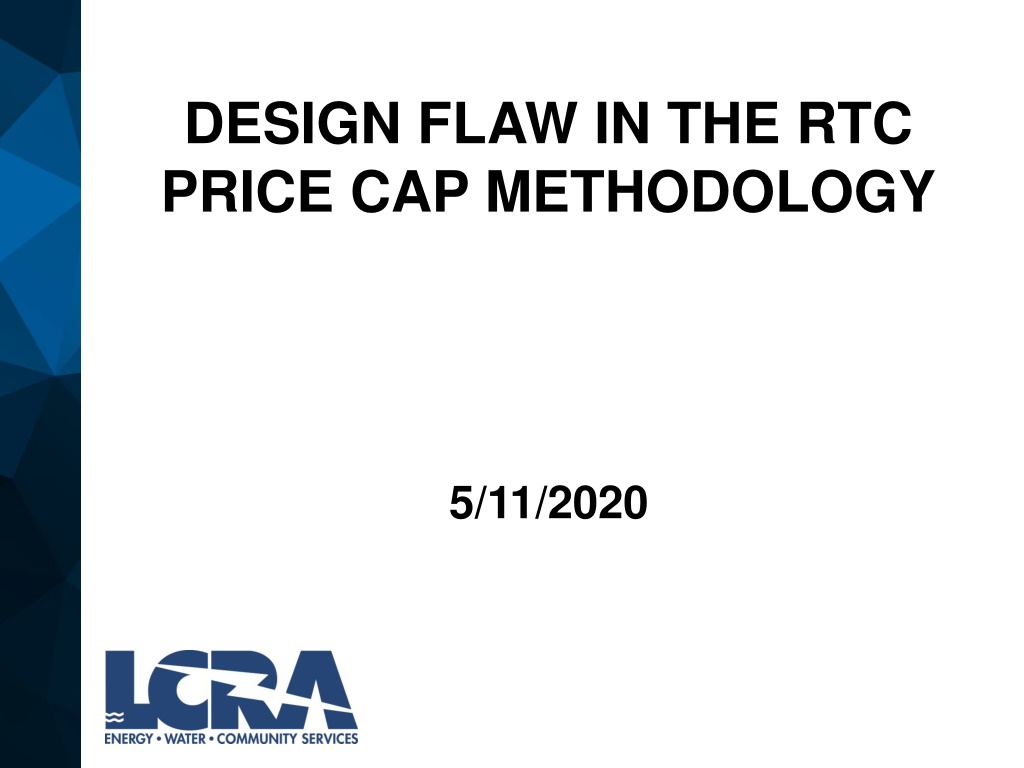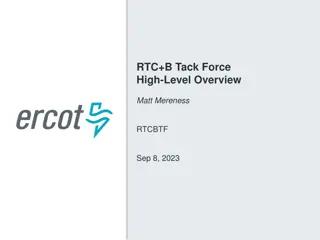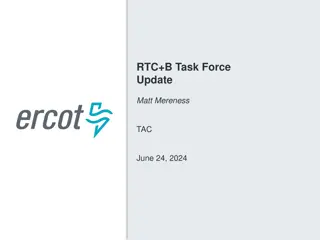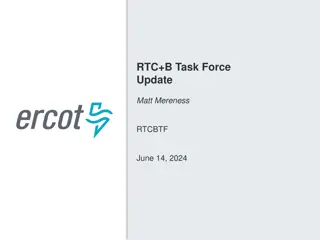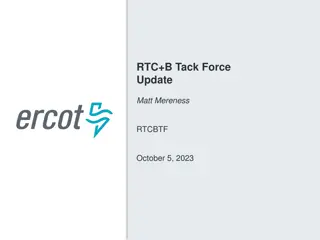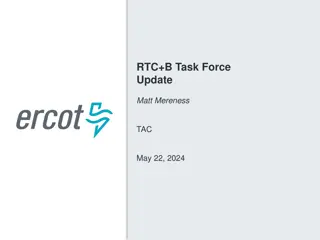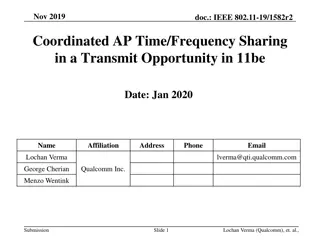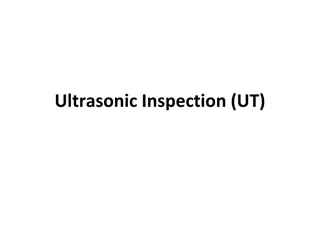Design Flaw in RTC Price Cap Methodology
The RTC price cap methodology in ERCOT poses various concerns regarding the pricing of energy and ancillary services, potentially discouraging generation resources from participating in markets due to a design flaw. Find out more about the scenarios and issues raised with the current system.
Download Presentation

Please find below an Image/Link to download the presentation.
The content on the website is provided AS IS for your information and personal use only. It may not be sold, licensed, or shared on other websites without obtaining consent from the author.If you encounter any issues during the download, it is possible that the publisher has removed the file from their server.
You are allowed to download the files provided on this website for personal or commercial use, subject to the condition that they are used lawfully. All files are the property of their respective owners.
The content on the website is provided AS IS for your information and personal use only. It may not be sold, licensed, or shared on other websites without obtaining consent from the author.
E N D
Presentation Transcript
DESIGN FLAW IN THE RTC PRICE CAP METHODOLOGY 5/11/2020
ERCOT Price Cap Problem Price Cap Scenarios Design Flaw Fix Today s Price Cap methodology Compared to RTC Price Cap Method Concerns that Have Been Raised with Design Summary 2
ERCOT Price Cap Problem 1. Real-Time Co-optimization will allow the price of energy to reach $11k/MW in real-time 2. ERCOT will correct/reduce the price of energy down to $9K/MW after the fact 3. The price of Ancillary Services can reach $9K/MW in real-time 4. ERCOT will not correct or reduce the price of Ancillary Services after the fact if the price of energy exceeds $9k/MW in real-time 5. The price cap methodology can create scenarios where generators are forced to provide energy during scarcity conditions and not be compensated for the fuel they burn 6. RTC should always produce market incentives that protect reliability 7. Design Flaw will discourage Generation Resources participation in the Day Ahead Market because energy produced from Day-Ahead AS is valued less than other energy produced in real-time during extreme pricing a) b) The RTC optimization values all energy in real-time equally The energy is devalued by the price cap procedure 3
Design Flaw will Discourage Generation During Extreme Scarcity by Denying the Ability to Recover Fuel Cost - Scenario #1 1. If the real-time price of energy reaches $10k/MW (or any number over $9K) 2. AS price is set on the demand curve at $9K/MW 3. Generator sold 100 MW of AS day-ahead 4. RTC dispatches all 100 MW of AS as energy in real-time 5. ERCOT corrects the energy price from $10K/MW down to $9K/MW per price cap procedure 6. AS price remains at $9K/MW a) Generator provided energy in real-time instead of AS and therefore owes ERCOT $9k/MW for all 100 MW of AS sold DA Generator provided all 100 MWs with no compensation for fuel cost b) 4
Price reaches but does not exceed Cap in Real- Time - Scenario #2 1. RTC Optimization produces the correct incentive to generate 2. If the real-time price of energy reaches $9k/MW 3. AS price is set on the demand curve at $7K/MW 4. Generator sold 100 MW of AS day-ahead 5. RTC dispatches all 100 MW of AS as energy in real-time a) Generator provided energy in real-time instead of AS and therefore owes ERCOT $7k/MW for all 100 MW of AS sold DA b) Generator provided all 100 MWs as energy 6. Price does not need to be adjusted to stay under the cap; therefore, the incentives work properly 5
Fix Price Cap Flaw Scenario- Energy Price Partially Exceeds Cap #3 1. If the real-time price of energy reaches $10k/MW (or any number over $9K) 2. AS price is set on the demand curve at $9K/MW 3. Generator sold 100 MW of AS day-ahead for $1K/MW 4. RTC dispatches all 100 MW of AS as energy in real-time 5. ERCOT corrects the energy price from $10K/MW down to $9K/MW per price cap procedure 6. AS price is corrected by reducing AS as well as energy by an equal amount ($9k/MW - $1k/Mw ) = $8K/MW a) Generator provided energy in real-time instead of AS and therefore owes ERCOT $8k/MW for all 100 MW of AS sold DA This insures that the incentive that was produced by the RTC optimization remains intact and is not undone by the price cap procedure 7. 6
Todays Price Cap Methodology Compared to RTC 1. SPPs are maintained at $9k or lower by applying the following price cap methodology: a) b) c) LMP = Marginal energy price when there is not any transmission congestion SPP= LMP + ORDC ORDC = (VOLL(i.e. $9k) - system Lambda(marginal energy price))*LOLP LOLP = 1 when reserves are scarce (i.e. 2000MW or below) 2. 3. Today s price cap methodology insures that the generator receives the marginal energy price by reducing the real-time AS price in order to preserve the proper generation incentive and to stay below the price cap of $9k 4. The current RTC Price Cap methodology does not preserve the marginal energy price and therefore does not maintain the proper incentive that is part of the RTC optimization algorithm 7
Concerns with Design Flaw Fix 1. The RRS & Regulation demand curves can reach $9k but the Non-Spin & ECRS demand curves are lower. a) Concern: The adjustment to the real-time AS price could create a Non-Spin or ECRS real-time price that goes negative b) Answer: The RTC optimization will not award Non-Spin or ECRS during scarcity conditions which result in prices in excess of $9k. All Non-Spin or ECRS will be fully deployed in EEA conditions. ERCOT had previously proposed a price floor of zero for this condition which is the correct approach. 2. If Peaker Net Margin reaches $315k and the LCAP is applied, this could potentially create a scenario where RRS & AS could be priced at zero a) Concern: This could be a problem because ERCOT will always maintain a minimum amount of RRS & Regulation Reserves in real-time b) Answer: This is true but PNM has never gotten remotely close to $315K. Therefore the probability of this outcome is extremely low. c) Answer: Don t apply the MCPC adjustment when the LCAP is in effect. The price adjustment still creates the wrong incentives and applying the flaw fix in this scenario will properly preserve the marginal energy price but not provide adequate AS pricing for the small amount of remaining RRS & Regulation. Not applying the fix will provide the wrong marginal energy price for those generating. (No good answer exists for this low probability scenario) 8
Summary Real-Time Co-Optimization should always provide incentives to protect reliability in real-time 1. 2. Generators should be given proper incentives to generate during times of scarcity 3. Unlike today s price cap methodology, the current RTC price cap methodology will reduce the marginal price of energy in real-time and thus create a disincentive to generate. 4. This flaw is easily fixed by reducing the AS price by an equal amount as the energy price cap reduction 5. The RTC optimization algorithm will not award Non-Spin & ECRS during these extreme EEA conditions. 6. Energy will be deployed on all available resources except for a limited amount of RRS & Regulation Reserves 7. Concerns raised about the LCAP scenario have a very low probability of happening and there is not a good solution for creating the proper incentive to generate when the price cap methodology is applied under this low probability scenario. Either applying the flaw fix or not applying the fix results in wrong incentives 9
